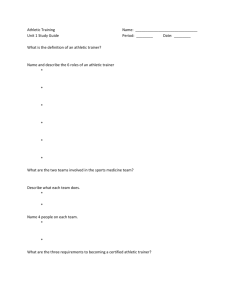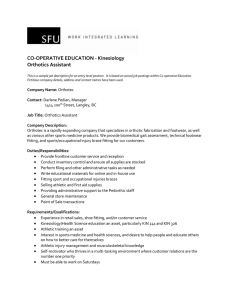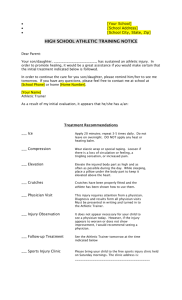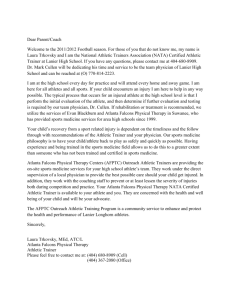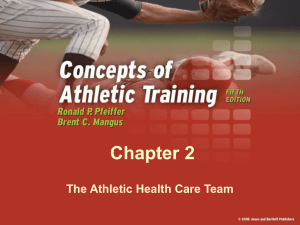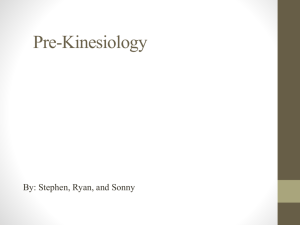DCP individual report - Connor's e
advertisement
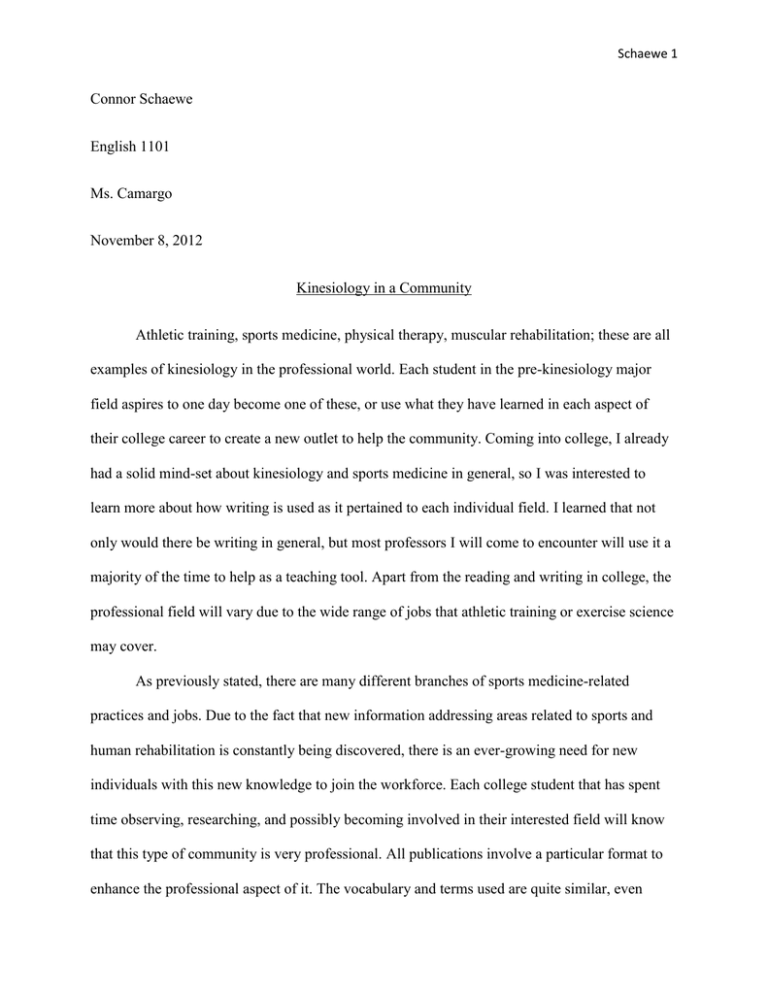
Schaewe 1 Connor Schaewe English 1101 Ms. Camargo November 8, 2012 Kinesiology in a Community Athletic training, sports medicine, physical therapy, muscular rehabilitation; these are all examples of kinesiology in the professional world. Each student in the pre-kinesiology major field aspires to one day become one of these, or use what they have learned in each aspect of their college career to create a new outlet to help the community. Coming into college, I already had a solid mind-set about kinesiology and sports medicine in general, so I was interested to learn more about how writing is used as it pertained to each individual field. I learned that not only would there be writing in general, but most professors I will come to encounter will use it a majority of the time to help as a teaching tool. Apart from the reading and writing in college, the professional field will vary due to the wide range of jobs that athletic training or exercise science may cover. As previously stated, there are many different branches of sports medicine-related practices and jobs. Due to the fact that new information addressing areas related to sports and human rehabilitation is constantly being discovered, there is an ever-growing need for new individuals with this new knowledge to join the workforce. Each college student that has spent time observing, researching, and possibly becoming involved in their interested field will know that this type of community is very professional. All publications involve a particular format to enhance the professional aspect of it. The vocabulary and terms used are quite similar, even Schaewe 2 between articles of different areas of kinesiology. Although there may be differences in the names of the fields, each professional in that field is successful because they can rely on others to help them, when need be. Because the jargon (terms and abbreviations relative to medical and anatomical conversation) is so comparable, an athletic trainer, for example, could research a more specific article published by a physical therapist that gives a more in-depth explanation as how to rehabilitate a dislocated shoulder or MCL injury after surgery. This route may have been needed because the injured athlete did not want to, or did not have the funds to see an expert with further education. Now, this may seem extreme since an injury like an MCL or ACL tear is so severe, but the ends always justify the means. Most students aspiring to be some kind of athletic trainer will “…agree that athletic trainers are a key resource in preventing, recognizing and caring for sports injuries” (Athletic Trainers). A sprained ankle, wrist injury, even a dislocated shoulder or similar joint separation could be handled by the average high school athletic trainer and the equipment he possesses in the training room. When it came to broken bones or any kind of concussion or internal injury, the athletic trainer could be the first to respond on the scene, but he/she would not be able to fully help the athlete because they do not hold the necessary information or tools to fully fix the injury. However, since a broken bone is just a broken bone, and areas on the body are the same between an athletic trainer, EMT or paramedic respondent, and a surgeon, information and description of the injury can be relayed quite easily. Not only is the communication between individual fields important, but the writing that takes place is also a necessity. Each particular field does not necessarily have a lot of writing that is required on a daily basis. While the jargon used for a pre-kinesiology major and those in the field may be very close in nature, the writing may vary. While an athletic trainer will have to fill out an injury report that is laid out in a certain format, a physical therapist needs to map out how Schaewe 3 they plan on healing the injured individual. The difference between the writing in each of these fields is relevant. Necessities of jobs that are involved in the kinesiology field are ever increasing because kinesiology in general is “…renowned for being able to uncover and help the underlying causes of health problems that are difficult to find by any other means” (Kinesiology and EFT). Not only is the path required to rehabilitating someone important, but they need to also know the patient’s history and how the incident occurred. Surprisingly, this is all also in writing. Similar to the relay of information by mouth, facts and data can be passed on and obtained in the form of writing that can be saved and preserved. By doing this, professionals can continue to look back at the incident to help them move forward with their particular patient. In conclusion, the field of sports medicine, physical therapy, athletic training, and any other kinesiology-related jobs have a lot in common. Their jargon is very similar, and that can be reflected onto the writing that impacts each of them. By learning about the college experience of my high school athletic trainer, along with the information and logic I pieced together, writing is a part of this community. As I continue through my college career and go on along the path toward becoming a professional in my field, I now know that there are different types of writing that I will run into in multiple different situations. Kinesiology has a diverse community with similar standards of communication and writing that brings them together.
